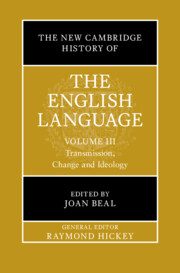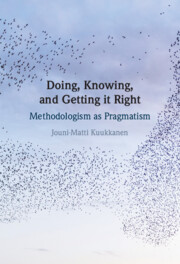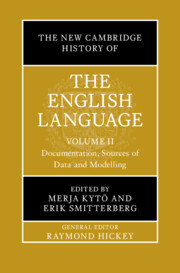Refine search
Actions for selected content:
3387366 results

Comparing Syntax
- An Introduction to Formal Language Typology
- Coming soon
-
- Expected online publication date:
- January 2026
- Print publication:
- 31 December 2025
-
- Textbook
- Export citation
Unfinished Business
- Two Decades with the EU Takeover Directive
- Coming soon
-
- Expected online publication date:
- January 2026
- Print publication:
- 31 January 2026
-
- Book
- Export citation

Making and Breaking the Rules in Business and Human Rights
- Coming soon
-
- Expected online publication date:
- January 2026
- Print publication:
- 31 January 2026
-
- Book
- Export citation
Critical Realism in Applied Linguistics
- Coming soon
-
- Expected online publication date:
- January 2026
- Print publication:
- 31 January 2026
-
- Book
- Export citation

Keeping Hold
- A Cultural and Social History of Possession in Eighteenth-Century Britain
- Coming soon
-
- Expected online publication date:
- January 2026
- Print publication:
- 31 January 2026
-
- Book
- Export citation

The Cambridge Companion to the History of Multinationals and Society
- Coming soon
-
- Expected online publication date:
- January 2026
- Print publication:
- 31 January 2026
-
- Book
- Export citation
Enemies in Agreement
- Political Volatility and the Design of Arms Control
- Coming soon
-
- Expected online publication date:
- January 2026
- Print publication:
- 31 January 2026
-
- Book
- Export citation

The Evolution of Western Thought
- A New History, from Antiquity to the Early Modern Era
- Coming soon
-
- Expected online publication date:
- January 2026
- Print publication:
- 31 January 2026
-
- Textbook
- Export citation

The New Cambridge History of the English Language
- Context, Contact and Development
- Coming soon
-
- Expected online publication date:
- January 2026
- Print publication:
- 30 October 2025
-
- Book
- Export citation
States Under Stress
- Explaining Resilience in the Middle East
- Coming soon
-
- Expected online publication date:
- January 2026
- Print publication:
- 31 January 2026
-
- Book
- Export citation
Jewish Theological Realism
- Recovering Reference to God in Rabbinic and Modern Thought
- Coming soon
-
- Expected online publication date:
- January 2026
- Print publication:
- 31 January 2026
-
- Book
- Export citation
The Italian; or, The Confessional of the Black Penitents
- Coming soon
-
- Expected online publication date:
- January 2026
- Print publication:
- 31 January 2026
-
- Book
- Export citation
Using Polyvagal Theory to Optimize Healthcare Excellence
- Coming soon
-
- Expected online publication date:
- January 2026
- Print publication:
- 31 January 2026
-
- Book
- Export citation

The New Cambridge History of the English Language
- Transmission, Change and Ideology
- Coming soon
-
- Expected online publication date:
- January 2026
- Print publication:
- 23 October 2025
-
- Book
- Export citation

Coding for Erasure Channels
- Coming soon
-
- Expected online publication date:
- January 2026
- Print publication:
- 31 January 2026
-
- Book
- Export citation

Doing, Knowing, and Getting it Right
- Methodologism as Pragmatism
- Coming soon
-
- Expected online publication date:
- January 2026
- Print publication:
- 31 January 2026
-
- Book
- Export citation

The New Cambridge History of the English Language
- Documentation, Sources of Data and Modelling
- Coming soon
-
- Expected online publication date:
- January 2026
- Print publication:
- 16 October 2025
-
- Book
- Export citation
The Early Qur'an in Mecca
- Apocalyptic Expectation at the Dawn of Islam
- Coming soon
-
- Expected online publication date:
- January 2026
- Print publication:
- 31 January 2026
-
- Book
- Export citation

The World of Leonard Cohen
- Coming soon
-
- Expected online publication date:
- January 2026
- Print publication:
- 29 January 2026
-
- Book
- Export citation
Empirical Legal Studies in EU Law
- Coming soon
-
- Expected online publication date:
- January 2026
- Print publication:
- 31 January 2026
-
- Book
- Export citation
